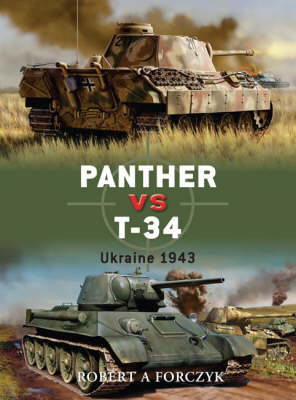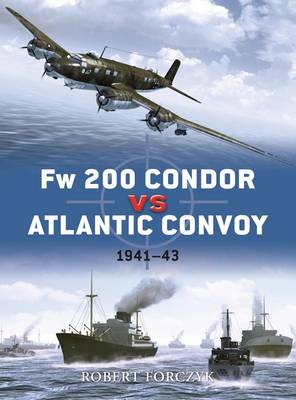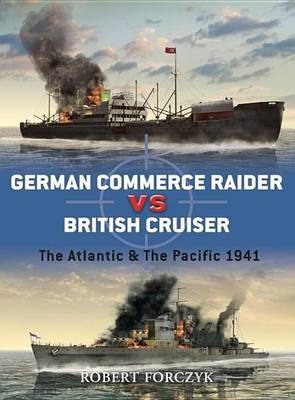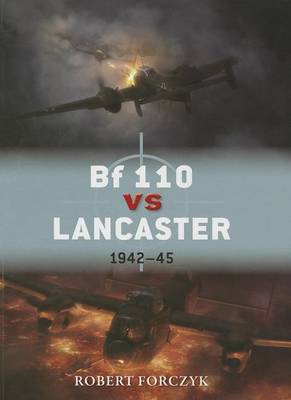Duel
4 primary works • 6 total works
Book 4
This book describes the design and development of these two deadly opponents, the Panther and the T-34, analysing their strengths and weaknesses and assessing their tactics, weaponry and training. Moreover it gives an insight into the lives of the tank crews themselves who were caught up in the largest land conflict of World War II in some of the most important engagements in the history of warfare. This was a duel between the titans of the Soviet and German armed forces in a ruthless and relentless death match that would determine the war on the Eastern Front and indeed the fate of Nazi Germany.
Book 15
The first major clash between a European and Asian state in the modern era signalled the beginning of Japan's rise as a major power on the world stage. Watched by the rest of the world's superpowers, this incredibly violent war was disastrous for the Russians who, despite their superior numbers, were defeated by the Japanese underdogs in a spectacular fashion. The key technical elements of firepower, protection, maneuverability and communications for each side are covered in detail and accompanied by first-hand accounts and specially commissioned artwork to explain and illustrate this historically significant duel.
Book 25
After the fall of France in 1940, Germany attempted to strangle Britain into submission by attacking the Atlantic Convoys, which brought much need supplies and war material from the USA and Canada. While the U-boats attacked from beneath the seas, the Germans modified a civilian airliner to create the Fw-200 Condor to attack from the skies. By the summer of 1941, the Condor attacks had succeeded to the extent that Winston Churchill called them 'the scourge of the Atlantic'. This book discusses the development of the Condor, and analyzes the various Allied responses, including the development of the Hurricat, a modified hurricane that could be launched via catapult from modified merchant ships.
Book 27
During World War II, the Kriegsmarine armed a number of merchant vessels with concealed guns and torpedo tubes for surprise attacks against Allied shipping. To counter this deadly threat, the Royal Navy employed cruisers and their intelligence-gathering apparatus to find and destroy the disguised German commerce raiders. This Duel title covers the deadly game of cat and mouse, fought by these surface vessels during World War II.
On the Soviet side, based upon lessons from the Spanish Civil War, the Red Army decided to develop a heavy "breakthrough" tank to smash enemy infantry defenses. This resulted in the KV-1 and KV-2 tanks, introduced in 1939. At the start of Operation Barbarossa, both these tanks were virtually invulnerable to the weapons of the Panzerjager and demonstrated their ability to overrun German infantry on several occasions. This advantage gave the Red Army a window of opportunity between the fall of 1941 and the spring of 1942 to use their heavy tanks to repel the German invasion in a series of desperate counteroffensives. Yet the window of Soviet advantage was a narrow one and the duel between the Soviet KV heavy tanks and German Panzerjager had a major impact upon the struggle for the strategic initiative in 1941-42.
The RAF introduced the Avro Lancaster in 1942 and used it to spearhead this aerial offensive. In response, the Luftwaffe created an elite nightfighter force based primarily upon the Bf 110. The Luftwaffe was quick to equip it with airborne radar that allowed it to intercept and destroy Lancasters over Germany. In turn, the RAF adopted countermeasures such as the Monica rearward-looking radar to alert Lancaster crews to the approach of nightfighters. In May 1943 the Luftwaffe suddenly developed a novel technical and tactical approach to attacking RAF bombers. The new tactic proved amazingly successful, and British bombers could be attacked from below with no warning. For its part, the RAF failed to detect the new German tactic for six crucial months, during which time its Lancaster bombers were almost defenceless against this new threat. In time, however, the German advantage of surprise was lost and the RAF developed countermeasures to deal with the new threat. The duel between upgraded Bf 110s and Lancasters in the night skies over Germany became increasingly dominated by cutting-edge technology, which would determine the efficacy of strategic bombing.





